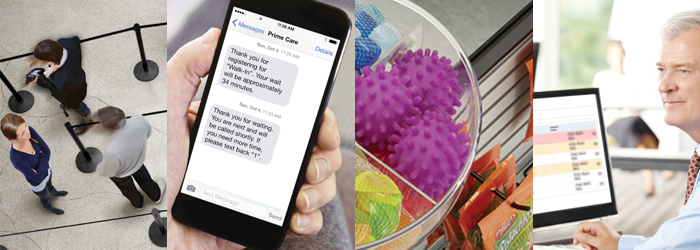
Not Just for Airports: 5 Uses for Directional Signage in Your Queue
We’re all familiar with directional signage at airports. It’d be impossible to find your way without it. But these informative signs can be useful across many different industries, from retail shops to banks. Wherever you find customer “traffic,” directional signage just might have a role to play. Using signage to direct and inform people improves customer flow; eliminates customer frustration, particularly when the navigation in, around, and through a business is complex; and improves service efficiency as a whole (employees can spend time doing more significant things for customers than just helping them locate the checkout line or the restroom). Signage is especially helpful in the queue. All queues are not intuitive, and all customers are not necessarily familiar enough with a business to figure out the queue as quickly as they would like or need. The simplest messages can have a major impact on how smoothly a queue operates and how happy customers are. Here are some potential uses for directional signage in the queue:
-

- To point out where the line begins.
It’s not always obvious where a line starts. It’s a mistake to assume that every visitor to your establishment will automatically know what to do and where to go. Always look at your queue from the perspective of a first-time customer and highlight the basics with traditional freestanding signage.
- To point out where people should wait for the next available service agent or cashier.
Post-top sign frames make it clear where the line ends, eliminating any “people jams” at the end of the queue and, more importantly, eliminating confusion. If customers don’t know what they’re supposed to be doing or where they’re supposed to be standing, they’ll make their own rules. One simple sign can reduce any anxious feelings on the part of the customer and keep the queue trouble-free and moving smoothly.
- To direct people to the right queue based on their need.
Not all queues lead to the same ending. If your business operates multiple queues for multiple services – like a queue for warranty repairs, returns, purchases, or customer service – signage at the start of every queue will make it clear where customers should line up for a particular service, meaning they spend less time hunting for the right waiting line and more time getting their business completed.

- To direct people to the appropriate station for service.
Once a visitor has arrived at the right station and is at the head of the queue, you can aid them further by offering signs and signals that direct them to the next available agent in a timely and efficient manner. Station lights and electronic queuing screens with prompts act as directional “pointers” to help customers know where to go and avoid agents having to yell “Next!”
- To direct people to alternative queues that may have shorter waiting lines.
Everyone loves a short line and would relish the opportunity to be invited over to another queue and potentially cut their wait time. For example, a multi-floor or multi-department store might have a long line in one part of the store and an empty line in another section of the store. Freestanding directional signage can be quickly deployed to lead people to a shorter and faster checkout line. How can your business benefit from directional signage?
SUBSCRIBE
Subscribe to stay up-to-date with new products, resources information and news.
RECENT RESOURCES
From Port to Pool Deck: How One of America’s Largest Cruise Lines Manages Record Passenger Flow
View4 Queue Management and Retail Merchandising Hacks from the PGA Masters and Others
ViewVIDEO - Magnetic Stanchions
ViewFrom Bottlenecks to Breakthroughs: The Transformative Power of Magnetic Stanchions
View









